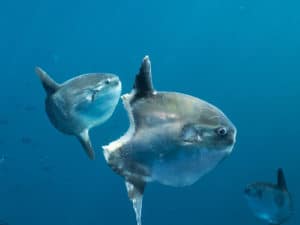
Statistical analysis seems straight forward. Ask some questions and measure the results. But that’s not quite how it works. There are a lot of things that can skew the results and make what seemed like a straight forward outcome incorrect in terms of the desired information.
This problem is playing out for recreational fishing as this is being written. Going back a number of years, the National Academy of Sciences (NAS) was tasked with analyzing the Marine Recreational Fisheries Statistical Survey (MRFSS) to see if the results produced could be used for managing recreational fisheries. The results of that study indicated that NOAA Fisheries had to go back to the drawing board and come up with a much better way to collect recreational fishing data, if it was going to be used in the fisheries management process. Unfortunately, some simply tried to use this as an excuse to blame NOAA Fisheries for any restrictive fishing regulations. The truth was that MRFSS was never designed for fisheries management, but due to a lack of other data it had become a sort of proxy for just that. The NAS emphatically said “No!”
NOAA Fisheries was tasked with developing a new program to get the needed recreational catch data, because recreational fishing had become a substantial impact on a number of important fisheries. Tearing apart MRFSS and rebuilding it into a useful tool took a lot longer than initially anticipated. From the layman’s standpoint, the main problem is that there are a lot of us who like to go out fishing. We do it from private boats, from charter and party boats, and from shore. There is no centralized point where the needed information can be collected, unlike the commercial industry where catch gets unloaded at dealers who have stringent reporting requirements. Yes, that system has faults and uncounted catch, but in general that data is pretty darn good.
The Marine Recreational Information Program
The outcome of the new NOAA Fisheries effort was the Marine Recreational Information Program (MRIP). As MRIP was being built, most of the coastal states had implemented some form of saltwater fishing license. This was and is an important piece of this new process.
There are basically two major pieces to the puzzle, which admittedly is an over simplification. It is necessary to understand which fish are caught and how many of each species are caught and/or kept.
Under the old MRFSS system effort, or how many trips anglers took, was measured through a random telephone survey to coastal zip codes. That is, a survey company was employed to ring random households along the coast and inquire as to their saltwater fishing activity. Their answers were recorded, and NOAA could extrapolate the number of anglers using statistical analysis. This was extremely inefficient. With the list of license holders, that random survey could be a lot more focused with a mailed fishing effort survey (FES).
The second part is determining what species are caught and kept. This is done via port samplers who do in-personal interviews at piers, marinas, and the like to determine catch composition. Then the two parts are brought together to calculate the total catch. Is this system perfect, NO! But it does give a very good indication of what the recreational catch is and is far better than MRFSS.
An Overestimation of Angler Effort
So, what’s happening? To me the good news is that there is still an ongoing effort to fine tune the results of the MRIPs data, and it has discovered some flaws. How the questions in the mailed FES survey are asked seem to have caused some folks to “telescope” some responses. That is, when the anglers were asked how many trips that they took in a specified timeframe, they tended to include trips from the time mentioned in the inquiry as well as a period extending past the intended start and end dates. So the responses are biased, showing more angler effort than is actually occurring. While some of this can be explained by over enthusiasm, some is also inadvertent. The statistical experts are working own how the questions are asked to minimize this reporting bias. That’s a plus.
Continued investigation has determined that fishing effort has been over estimated by 35 to 40 percent. So what? Well the problem comes when the effort and the catch composition is put together. The increased effort over estimates the amount of fish being removed. Well, that should be a plus because one might think more fish are left out there.
The trouble comes from how that catch information is used in the stock assessment. Essentially, the stock numbers are “backed into.” The “catchability” of the fish, or how many are caught per unit of angler effort, is assumed to be constant. So if more fish are caught, that should mean more fish out there. When the assumed number of fish caught/kept has been over inflated, it incorrectly over estimates the whole population. So once the numbers are corrected and put into the assessment, there will likely be fewer fish estimated in the stock. That could mean that some restrictive measures will need to be put in place, however each stock will need to be looked at individually.
Hopeful for the Future
I continue to believe that this ongoing analysis is a plus. It recognizes that recreational fishing is an important part of the management system and an economic benefit to the country. Its impact on resources needs to be properly managed and that is what will keep this important community and industry viable into the future. We’ll be watching the outcome.









